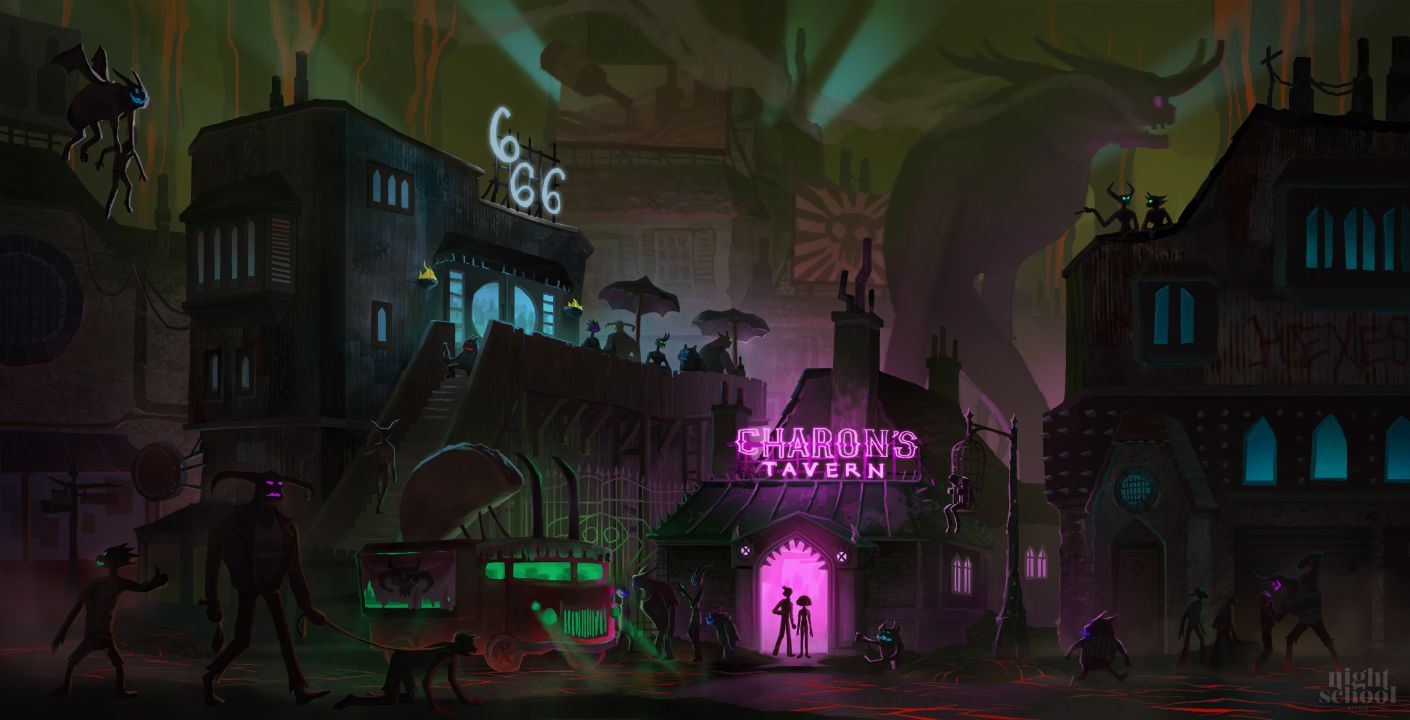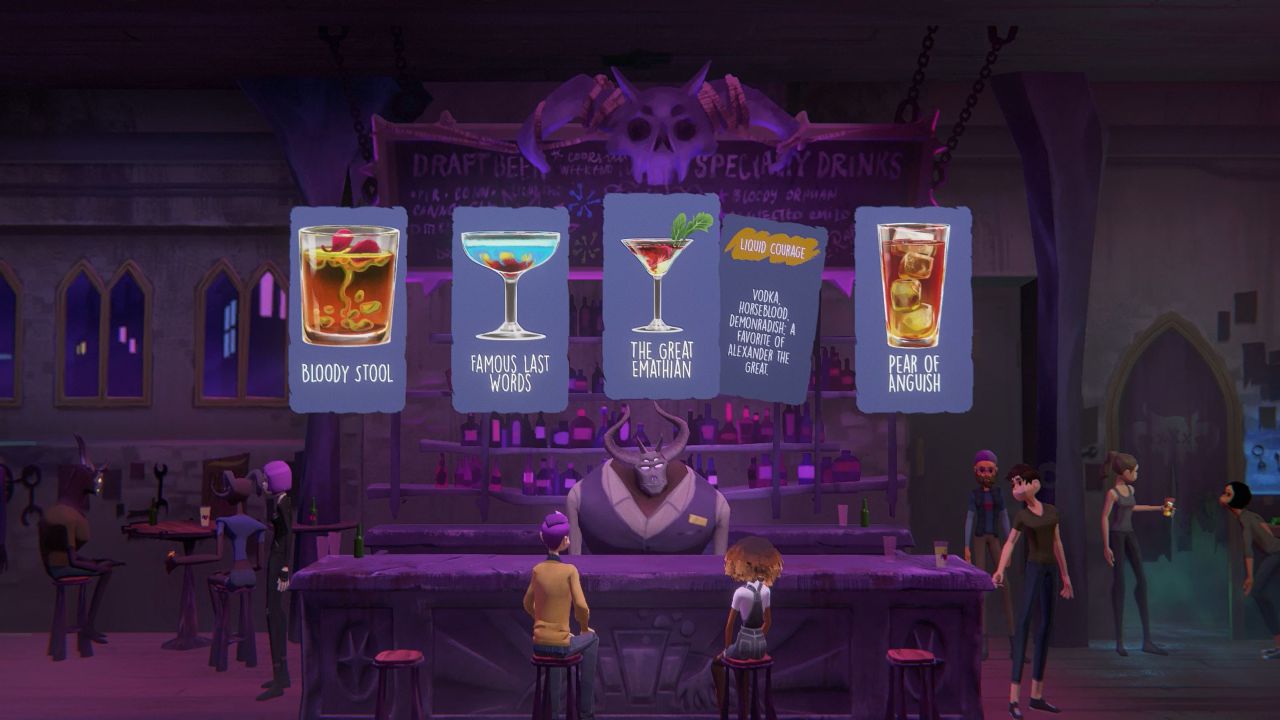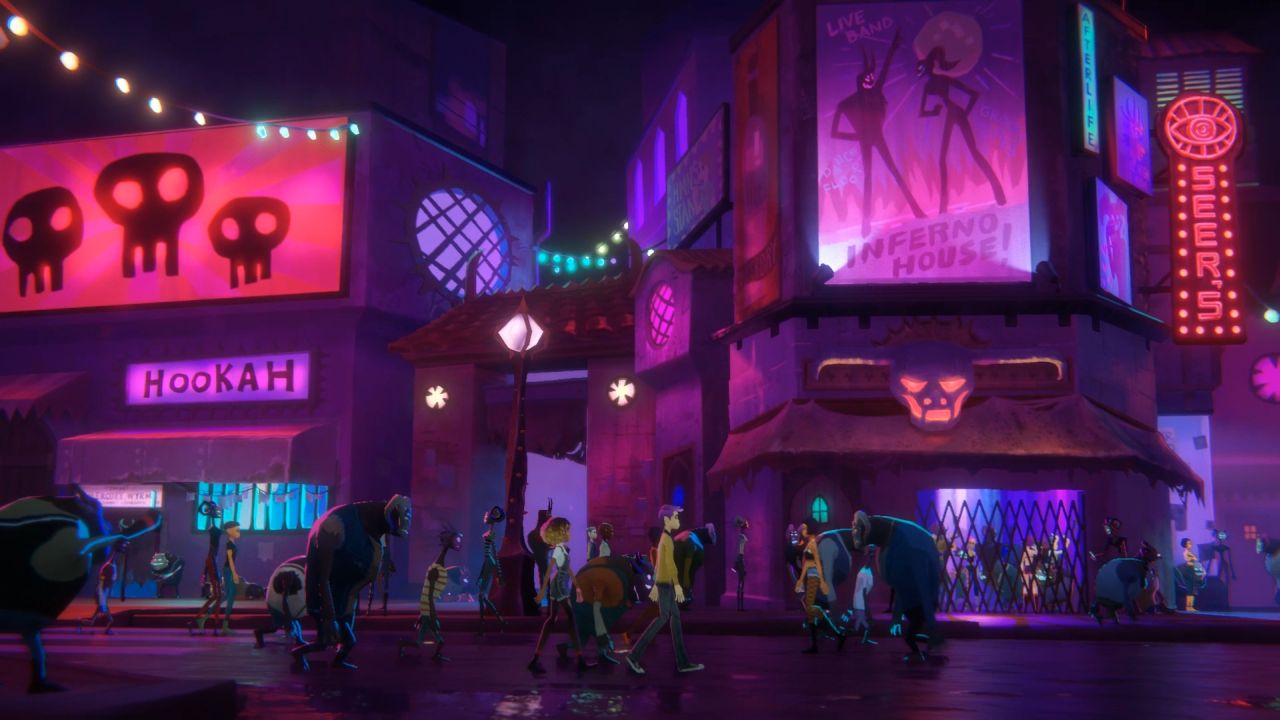Afterparty Review
Can't drink yourself to death when you're already in Hell
I didn’t drink until I was eighteen, and then I drank a lot. In college, my friends and I ran an unofficial club that would throw parties on a monthly basis and by graduation, we had the art down to a fine science. We could acquire a keg, set up beer pong, make jello shots, and keep the party going well in the early hours of the morning. After graduation, I left a lot of that house-party life behind, but I still did plenty of drinking. I bar hopped on New Year’s Eve, did birthday shots, had first date drinks, and attended happy hours. Whether or not you like to drink, alcohol has become such a part of Western culture, you almost have to gain some appreciation for it. But beneath that culture lies a lot of darkness; we drink to calm social anxiety, to conform to social norms, to avoid confronting mental demons, to overcome shyness, or to medicate mental anguish. When you look at alcohol this way, one has to question the merits of drinking culture. This is one of the surprising themes explored in Afterparty, the second game from Night School Studio.

Players assume the roles of Lola and Milo, two recent college-grads who find themselves condemned to Hell without memory of how they died or why they were rejected from Heaven. While Hell is filled with demons and torture and terrible things, it operates like a major metropolitan city, filled with over-worked 9-5ers looking to clock out at the end of the day and blow off steam. The most popular way to blow off steam is to have a drink ...or ten. So when our protagonists are saved by clock-out and left to wander the streets of Hell for the night before being sent to eternal torture, there isn’t much else to do but get a drink. While doing this, they discover the ultimate loophole to escape Hell: you must out-party Satan.
At first, it all plays out a little too predictable. Milo and Lola have to fulfill certain tasks, then the game yells at you about your choices and how they matter - but they don’t, really - and things seem to just chug along. There are some good laughs along the way. The script is smart and the humor lands for the most part, but Afterparty plays things a little too obvious for too long. There’s an argument that the game is trying to settle us in, introduce us to the characters and the world, a setup that needs to work before it can start subverting what’s been established. Still, the game doesn’t get to the best stuff until you’re more than two hours into the five-hour adventure.
It helps that Lola (voiced by Janina Gavankar) and Milo (voiced by Khoi Dao) have good chemistry. Lola is the feisty, hot-headed strong one who is often playing big sister to Milo’s timid, neurotic little brother act. You’ve likely either been part of a duo similar to this or know of one. The chemistry works, but Night School doesn’t shy away from the fact the two friends may be using each other as a crutch, leaning on their differing personalities instead of developing their own independent lives. The other and even better theme explored in Afterparty is the concept that maybe there’s a different kind of pain and misery behind all of this drinking than you might expect. The writing is good enough that you’ll likely make it through the uneven start and get to some of the better ideas in the back half of the game. All that said, when the dialogue works, it’s some of the best in the business and there are some clever moments in Afterparty’s narrative.

The gameplay is a little more hit and miss. Afterparty falls into the new era of adventure game that is largely focused on dialogue and choices and less about puzzle-solving. Night School does break things up with small mini-games, which are cleverly designed around drinking. You’ll play beer pong, stack glasses, and have dance-offs. These activities are rudimentary and don’t offer much challenge, but it works to break up the dialogue. It just becomes a little too convenient when every minor demon suddenly wants to have a dancing competition or play beer pong - however, it’s kind of always surprising to me when someone who’s graduated college wants to play beer pong.
What’s a better mechanic is the drinking itself, which blends in well with the dialogue-focused mechanics. Whenever you get to a bar or party (this happens a lot), you’ll have the option to sit down and order a drink. You can consume your drink at any time and when you do, certain dialogue options will be open to you based on the drink you chose. Some drinks might give you more courage, some will make you yell about sports, and others will make you talk like a pirate. It’s a clever gameplay mechanic and it constantly pushes you to the bar, making you engage in the drinking culture the game is built around, afraid that without a glass in your hands you won’t have the right words to get through the game.
There’s a fake social media tool in the game, but it’s less a mechanic and more about aesthetic. While you explore, the version of Twitter in Hell, called Bickr, will popup with comments from random demons. It’s quite superfluous; I rarely found the posts funny or helpful and they can be easy to miss as you wander the world.
The rest of the aesthetic is quite good. The art itself isn’t likely to blow you away, but there are smart choices to dress things up a bit. The red and purple neon lighting is a brilliant color scheme, juxtaposing the colors associated with demons and club culture. The demon design is a little boring and sometimes the demons look a little too alike (even though the game tries to hang a lampshade on this issue.) The animations are alright, but I think it all worked a little better with Oxenfree’s camera, which was a little less tight and more forgiving.

What you see isn’t always great, but what you hear is astounding. The cast includes the talents of David Fennoy (playing Satan) and Ashly Burch (playing a demon cab driver) along with other voices you’re bound to recognize. They bring the game to life and lend personality to the characters they’re voicing. But the real standout is the soundtrack by scntfc. Having already proven his metal with Sword and Sworcery, Galak-Z, and Oxenfree, this is truly his best work. Afterparty’s soundtrack is a series of club bangers straight out of hell, pulsing with furious energy, grinding with too much bass, and annoying the hell out of your neighbors. I don’t even know if Night School got the best use out of this soundtrack, so be sure to check out the trailers, where the music is heavily featured.
Afterparty has some stumbles here and there, but the biggest one is easily in its tech. I played Afterparty on the Xbox One and I hit pretty consistent frame rate issues. This usually happened while running around the environments, often when Milo and Lola were talking to each other. That would be more forgivable if it was the only issue, but the list continues: icons would disappear, dialogue would weirdly loop so I would hear the same conversations twice, and some weird bugs made for wacky character animations. Nothing prevented my progress, but it definitely kept me from being able to get lost in the experience.
At times in playing Afterparty I felt like I was getting a contact high. All of the drinking and partying, I couldn’t help but think back to the days of late-night antics with a smile on my face. Why didn’t I party like that anymore? Didn’t I want to have fun? But as the game went on, I realized that the characters in Afterparty weren’t having fun; there was a lot of sadness behind those drinks. Shots that were taken to forget how you might have grown too attached to an unhealthy relationship, beers that you drank to cover up your insecurities, and cocktails that you used to lie about your ex. Night School faithfully explores drinking culture in a seemingly celebratory way at first, right before it starts to dig deeper and examine why these characters behave like this. While the game has shortcomings, its ability to look at a part of our culture that is so unquestioningly accepted and ask tough questions makes it worth playing - and it doesn’t hurt that there’s some good jokes along the way.
 Comments
Comments














